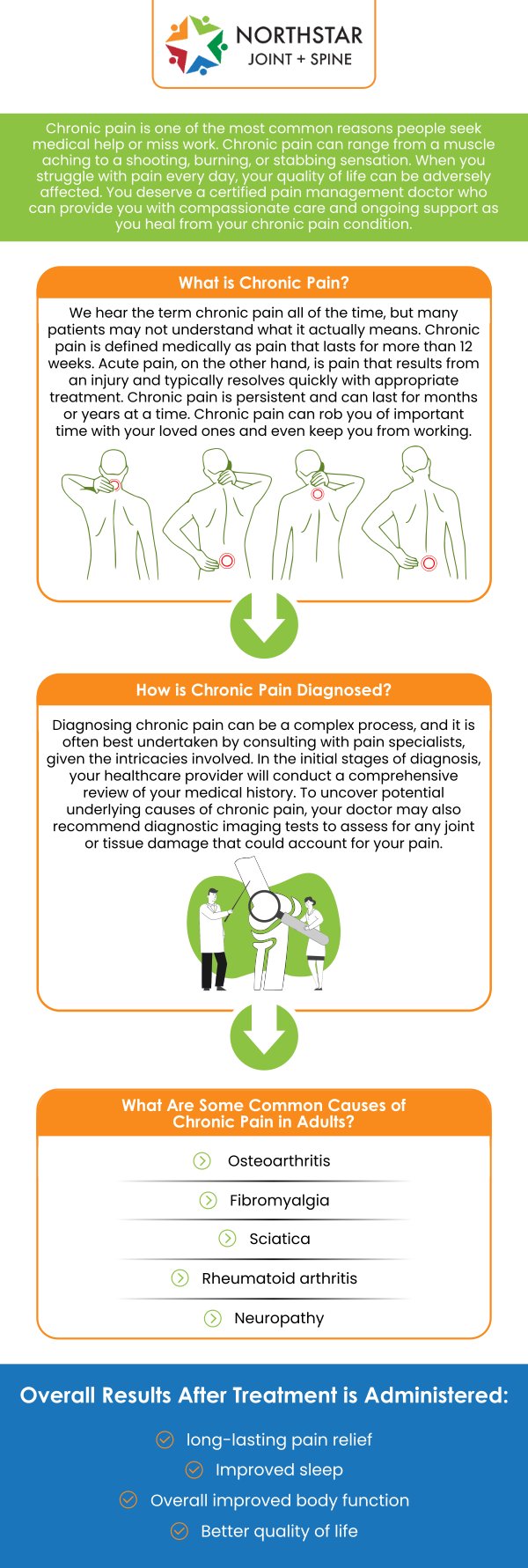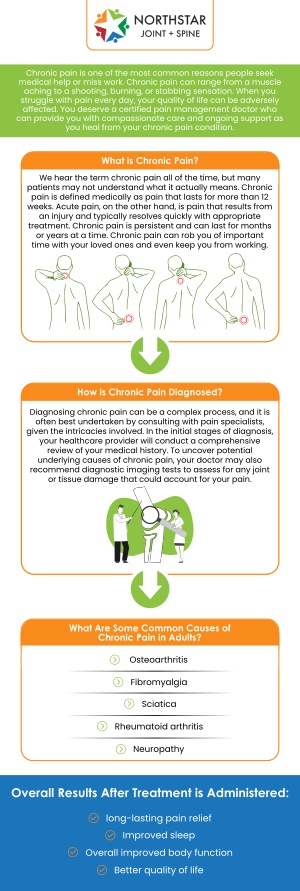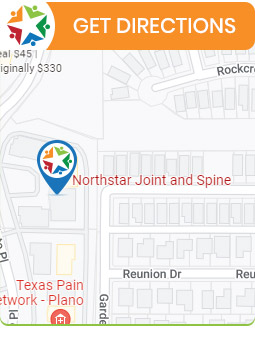When Chronic Pain Becomes Unbearable
When chronic pain becomes unbearable, it can significantly impact daily life, leading to physical and emotional distress. Persistent pain may reduce mobility, disrupt sleep, and affect overall well-being. Seeking specialized care is essential to manage and relieve chronic pain effectively. At Northstar Joint and Spine, Board Certified Dr. Robert J. Nocerini, MD, provides personalized treatments designed to reduce pain, restore function, and improve quality of life. For more information, contact us today or schedule an appointment online. We are conveniently located at 7704 San Jacinto Pl Suite #200 Plano, TX 75024.


Table of Contents:
How do I know if my chronic pain has become unbearable?
What should I do if my chronic pain is getting worse?
When should I seek medical help for chronic pain?
How can I maintain my quality of life when chronic pain becomes unbearable?
When Chronic Pain Becomes Unbearable: Relief with Dr. Robert Nocerini at Northstar Joint and Spine in Plano, TX
Chronic pain tends to build gradually, and what was once manageable can eventually reach a point where daily routines start to feel out of reach. When pain begins to interfere with basic tasks like standing, sleeping, or concentrating for long periods, that shift often signals the threshold has been crossed. It’s not just about how long the discomfort has lasted, but whether it’s starting to control the pace of the day or interrupt the ability to engage with work, relationships, or even moments of rest. That tipping point often reveals itself not through one sharp moment, but a series of adjustments that no longer seem to work. Another sign the pain has become overwhelming is when previous coping methods no longer offer sufficient relief. That loss of control can bring on frustration, fatigue, or even emotional symptoms like irritability or withdrawal, and all of it tends to blend together in a way that makes the problem feel bigger than just physical discomfort.
When chronic pain begins to intensify, it’s not something that should be ignored. A worsening pattern often points to changes either in the condition itself or in how the body is compensating around it. Sometimes, habits formed to work around pain can actually place strain elsewhere, which leads to a slow buildup of secondary discomfort. That kind of escalation often makes daily movement more limited and can contribute to a general sense of depletion, even if the cause isn’t always easy to name. Even if the root condition hasn’t changed, the pain response might be affecting surrounding muscles, joints, or nerves in new ways. The specialists at Northstar Joint and Spine can assess whether the pain has shifted in pattern or intensity, and from there, offer strategies to address both the source and its ripple effects throughout the body.
Medical attention should be sought once chronic pain begins to consistently interfere with daily life or when there’s a noticeable change in the way it behaves. That could mean new symptoms, longer flare-ups, or a pain response that now spreads into other areas. Often, people wait until their routines are fully disrupted before seeking help, but earlier intervention usually opens more options for relief. Even something as simple as no longer being able to sleep through the night without discomfort can be a sign that it’s time for a more detailed look.
When discomfort starts to dictate when and how a person moves through the day, the body is sending a clear message that something needs to be addressed more directly. A specialist can help determine whether the current approach is still effective or if the pain has developed in ways that require updated care or a new treatment direction.
Living with intense chronic pain often means having to make adjustments not just to movement, but to outlook, pacing, and routine. While it can feel overwhelming, quality of life doesn’t have to disappear entirely during a difficult stretch. Small changes like breaking tasks into shorter periods, limiting repetitive motion, or taking more time to rest following activity can help the body stay engaged without pushing it past its threshold. That kind of day-to-day balancing becomes even more important when pain is at its peak. Support systems and access to proper care can play a major role in preserving well-being. When pain becomes unbearable, the individual may benefit from a care plan that blends physical treatment with strategies to improve energy, mood, and overall mobility. The focus shifts from trying to erase the pain completely to finding ways to live around it without giving up meaningful activity. Most importantly, patients living with chronic pain should consult with specialists such as those at Northstar Joint and Spine. With the right guidance, it’s possible to build structure into the day that helps reduce physical strain while still maintaining purpose and presence.
Chronic pain can take a toll on both physical and emotional health, affecting work, relationships, and sleep. Dr. Robert Nocerini specializes in identifying the source of ongoing pain and developing individualized strategies to manage it effectively. He believes in addressing both the symptoms and the underlying causes for lasting improvement.
At Northstar Joint and Spine in Plano, TX, Dr. Nocerini integrates advanced procedures with supportive therapies to restore function and quality of life. His patient-centered approach ensures ongoing evaluation and adaptation of treatment plans, offering hope and relief for those living with unrelenting pain.
Chronic pain management is available at Northstar Joint and Spine. For more information, contact us today or schedule an appointment online. We are conveniently located at 7704 San Jacinto Pl Suite #200 Plano, TX 75024. We serve patients from Plano TX, Willow Bend TX, Frisco TX, Allen TX, Addison TX, North Dallas TX, and surrounding areas.

Check Out Our 5 Star Reviews


Additional Services You May Need
▸ Back Pain
▸ Chronic Pain
▸ Epidural Steroid Injections
▸ Spinal Cord Stimulation
▸ Viscosupplementation
▸ Genicular Nerve Blocks
▸ Facet Injections
▸ Joint Injections
▸ Sacroiliac Joint Injections
▸ Lumbar and Cervical
▸ Facet Medial Branch Blocks
▸ Diagnostic Nerve Blocks
▸ Medication Management
▸ Neck Pain Doctor
▸ Diabetic Peripheral Neuropathy
▸ Headaches
▸ Suboxone
▸ Botox for Migraines
▸ Peripheral Nerve Stimulation
▸ Spine
▸ Joints
▸ Muscles
▸ Bones

Additional Services You May Need
▸ Back Pain
▸ Chronic Pain
▸ Epidural Steroid Injections
▸ Spinal Cord Stimulation
▸ Viscosupplementation
▸ Genicular Nerve Blocks
▸ Facet Injections
▸ Joint Injections
▸ Sacroiliac Joint Injections
▸ Lumbar and Cervical
▸ Facet Medial Branch Blocks
▸ Diagnostic Nerve Blocks
▸ Medication Management
▸ Neck Pain Doctor
▸ Diabetic Peripheral Neuropathy
▸ Headaches
▸ Suboxone
▸ Botox for Migraines
▸ Peripheral Nerve Stimulation
▸ Spine
▸ Joints
▸ Muscles
▸ Bones






